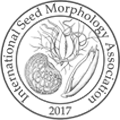Seed ID Forum › Seed ID Forum › Seed Morphology and Identification › ID UNKNOWN SEEDS
This topic contains 5 replies, has 2 voices, and was last updated by ID00001802fde1e704db4880eb150437c7ed58c5d7795d1aa 2 years, 10 months ago.
-
AuthorPosts
-
July 26, 2022 at 8:44 am #579
Hello everybody,
I am trying to identify some seeds but I can’t… Can anyone help me, please? I am working on a sample of Ipomoea purpurea and I think there are other Ipomoea (Unknown 1 and 2) but which species? plus 2 other species (unknown 3 and 4): about number 3 we are thinking to different families (Lamiaceae Boraginaceae or Ranunculaceae) and about the number 4 we are thinking to Euphorbiaceae. .Thanks a lot!
Best regards,
SilviaAttachments:
You must be logged in to view attached files.July 28, 2022 at 4:27 pm #584Hello Silvia,
Ipomoea species are a challenge to distinguish, but unknown 1&2 do look different than I. purpurea seeds. The other 2 unknowns I can give some suggestions for, and I will look further when I am back in the herbarium.
Unknown 3 looks like a species of Trichodesma in the Boraginaceae. Based on the shape and size, it might be T. zeylanicum. There aren’t many images online, but there is a fact sheet from the WSSA in the United States available that has a seed drawing.
Unknown 4 reminds me of a species in the Commelinaceae, due to what looks like a embryotega on seeds (round, raised area). The yellowish tissue caught in the seed to the left may a feature or a deformation. Please check images of Commelina or Murdannia species. If the seed is in one of these genera, the smooth surface will help narrow down to a species I think.
I hope this helps, and I will also look in the herbarium. Could you give a production area? My first thought is from India.
Best, Jennifer
July 28, 2022 at 4:34 pm #585Hello again,
As I was looking at unknown 1, I am reminded of Ipomoea eriocarpa, due to the smaller size and whitish, bubbled surface.
Jennifer
July 31, 2022 at 10:26 am #586Hello Jennifer,
Thank you so much, I’m always impressed by your seeds knowledge!!! It’s huge!
I do not know where these seeds are produced, our customer is a wholesaler and does not give us this kind of information. The only thing I am sure of is that they are for gardeners and for our laboratory, which is used to work with seeds from crop cultures, it is a new challenge.
Thanks again,
Best regards
SilviaAugust 2, 2022 at 4:26 pm #587Hello Silvia,
Thank you so much for your kind words, I enjoy identifying seeds and there is always much to learn!
I checked the herbarium with your seed images:
Unknown 1 – Ipomoea eriocarpa, Convolvulaceae, seed features: 3-4 mm long, surface whitish, finely reticulate with deep interspaces (looks pitted)
Unknown 2 – Ipomoea tricolor, Convolvulaceae, seed features: 6-7 mm long, dark brown, narrow egg-shaped with a distinctive, 2-lobed narrow end, side opposite hilum bumpy and uneven (on herbarium seeds)
Unknown 3 – Trichodesma zeylandicum, Boraginaceae, seed features: 3-4 mm long, triangular shape with rounded corners, one side grey and smooth, the other side dark brown and mostly warty tuberculate (other species have strong reticulate ridges)
Unknown 4 – Commelina sp. (cf. C. forskaolii), Commelinaceae, seed features for C. forskaolii: 3mm long, smooth surface, light and dark brown coloured patches, common weed species in India. It is difficult to assign a definitive species to this seed with that tissue along the hilum. There are species with a smooth surface that have appendages like this: C. appendiculata and C. attenuata. From what I read, these 2 species are native to forests in India, and might not be associated with Ipomoea seed fields. The tissue may also be a deformation of C. forskaolii seed, I’m not sure.
I hope this helps, Jennifer
August 7, 2022 at 3:48 pm #588Hi Jennifer,
Great, the descriptions perfectly match the seeds found.
I agree with you, identifying seeds is a passionate job!
Thanks again and see you for the next identification.Best, Silvia
-
AuthorPosts
You must be logged in to reply to this topic.



